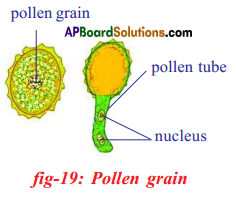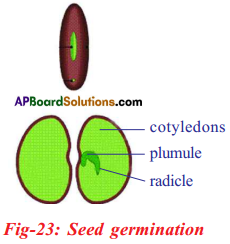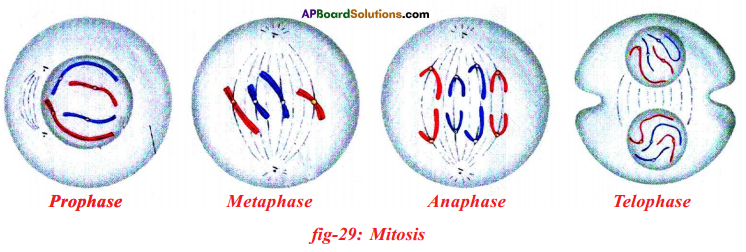AP State Board Syllabus AP SSC 10th Class Social Studies Important Questions Chapter 4 Climate of India.
AP State Syllabus SSC 10th Class Social Studies Important Questions 4th Lesson Climate of India
10th Class Social 4th Lesson Climate of India 1 Mark Important Questions and Answers
Question 1.
Deforestation happens in all areas in India. Suggest two remedies to stop deforestation.
Answer:
- Control over cutting of forests.
- Effective implementation of WALTA Act.
Question 2.
What is the reason for October heat?
Answer:
Reasons for October heat: High temperature, high humidity.
![]()
Question 3.
The rise of 2°C in average temperature results in a rise of one meter in sea level by early next century. Write any two slogans on the control of global warming.
Answer:
- Grow trees – save the earth.
- Avoid plastic bags – encourage cloth bags.
Question 4.
What do you mean by Western Disturbances?
Answer:
Cyclonic depressions coming from Mediterranean sea are called Western disturbances.
Question 5.
Observe the map of India and answer the following question.
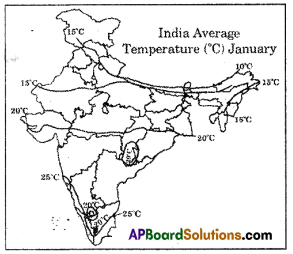
Mention the names of any two states in which the average temperature of January is 10°C.
Answer:
- Jammu Kashmir
- Himachal Pradesh
- Uttarakhand
- Uttar Pradesh
- Sikkim
- Arunachal Pradesh
![]()
Question 6.
In which monsoon season does the Coromandel coast receive less rainfall?
Answer:
The Coromandel coast receives less rainfall in the South-west monsoon season.
Question 7.
Observe the map and answer the following questions.
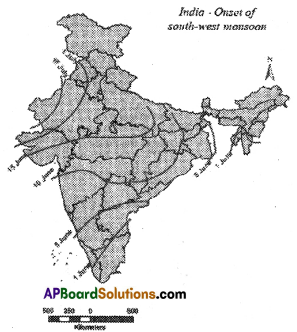 a) When do monsoons reach Maharashtra?
a) When do monsoons reach Maharashtra?
Answer:
On June 10th monsoons reach Maharashtra.
b) When do monsoons reach Kerala?
Answer:
On June 1st monsoons reach Kerala.
Question 8.
Observe the map and answer the following questions.
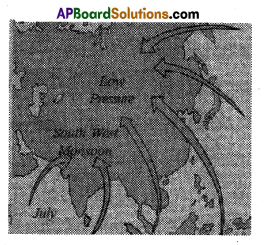 a) Why do winds always blow towards low-pressure regions?
a) Why do winds always blow towards low-pressure regions?
Answer:
- In low-pressure regions temperature is high and evaporation is more.
- Warm air rises, so cool air replaces it.
b) When do the south-west monsoons blow in India?
Answer:
Beginning of June, July.
![]()
Question 9.
Write down the reason for the low temperature in India in the months of December and January.
Answer:
- Pleasant and clear sky
- Low humidity 3) Angle of incidence
Question 10.
Mention any two actions that you would take if you were the officer, to prevent deforestation.
Answer:
- I would strictly implement the existing forest laws.
- I would bring awareness among the people on the need for the protection of forests.
Question 11.
Why does Coromandel Coast get high rain¬fall during North-east monsoons?
Answer:
Coromandel coast gets high rainfall during Northeast monsoons, because of cyclones and depression. The low pressure conditions of North-western India move far south.
Question 12.
“An international effort to form an agreement whereby all countries try to reduce their emission of greenhouse gases has so far not been achieved.” What is the reason for this disagreement among the countries of the world?
Answer:
Developed countries want developing countries to cut down on burning coal and other activities and developing countries say that their economic development will be seriously damaged if they don’t burn fossil fuels.
![]()
Question 13.
Which refers to weather?
Answer:
The state of atmospheric conditions over an area at a particular time refers to weather.
Question 14.
What are the elements of weather and climate?
Answer:
The elements of weather and climate are :
- temperature
- atmospheric pressure,
- wind,
- humidity and
- precipitation.
Question 15.
What are called climatographs?
Answer:
The pattern of the elements of weather and climate for a place can be shown using pictures called climographs or climatographs.
Question 16.
What do climographs show?
Answer:
Climographs show average monthly values of maximum temperature, minimum temperature and rainfall for a given place.
Question 17.
What are called climatic controls?
Answer:
The factors that affect climate are called climatic controls.
Question 18.
What are the factors that are influencing climate and weather?
Answer:
- Latitude
- Land-water relationship
- Relief
- Upper air circulation
Question 19.
Name some hill stations.
Answer:
Shimla, Gulmarg, Nainital Darjeeling, Kodaikanal and Udagamandalam.
![]()
Question 20.
Which is the coldest month in India?
Answer:
January is usually the coldest month. Day temperature sometimes drops below 10°C in several parts of the country.
Question 21.
Which areas enjoy a moderate climate?
Answer:
The coastal areas enjoy a moderate climate as the temperature remains well above 20°C.
Question 22.
How is India during winter?
Answer:
During winter, the weather is generally pleasant with clear sky, low humidity and cool breeze.
Question 23.
What are called ‘Loo’?
Answer:
The northern plain of India experiences dry and hot winds called ‘Loo’.
Question 24.
What are the two branches of the south-west monsoon?
Answer:
The Arabian Sea branch and the Bay of Bengal branch.
Question 25.
Which is more powerful in these two gases – Methane or Carbon dioxide?
Answer:
Methane is said to be even more powerful than carbon dioxide as a greenhouse gas.
10th Class Social 4th Lesson Climate of India 2 Marks Important Questions and Answers
Question 1.
Why do you think that, the effects of climate change may be felt by all countries?
Answer:
- The effects of climate change like global warming, increase of mean sea level, degradation of Ozone layer, etc. are not limited to one particular country.
- No country can escape from the negative impacts of climate change. Hence the effects of climatic change may be felt by all countries.
![]()
Question 2.
Study the following map and answer the questions given below.
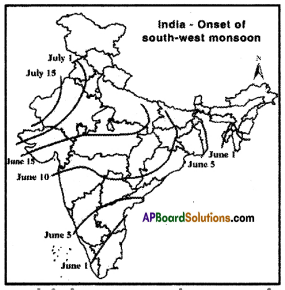 a) In which state, the south-west monsoon enter first?
a) In which state, the south-west monsoon enter first?
Answer:
Kerala.
b) When do the south-west monsoons reach Gujarat?
Answer:
June 15.
Question 3.
Suggest some measures to reduce global warming.
Answer:
Measures to reduce global warming:
- Afforestation
- Reduction of the burning of fossil fuels.
- Instead of coal, the use of solar energy to be encouraged.
- Reduction in the use of vehicles and encouragement of public transport system.
Question 4.
Observe the following figure and answer the questions given below:
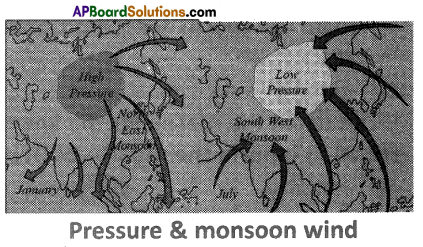
- What is the relation between atmospheric pressure and winds?
Answer:
The winds blow from a high-pressure area to low pressure area. - Which monsoon winds are mainly responsible for the bulk of Indian rainfall?
Answer:
South-West Monsoon.
![]()
Question 5.
Classify the seasons according to Indian calendar and write the months
Answer:
| Seasons | Months according to the Indian calendar | |
| Vasantha | Chaitra – Vaishaka | |
| Grishma | Jyestha- Ashadha | |
| Varsha | Sravana – Bhadra | |
| Sharad | Aswayuja – Karthika | |
| Hemantha | Margashira – Pushya | |
| Shishira | Magha – Phalguna | |
Question 6.
Write briefly about South-West monsoons.
(OR)
Describe the Monsoon mechanism in India.
Answer:
- The monsoon forms in the tropical area approximately between 20°N and 20°S latitudes.
- The heating of land creates low pressure on the landmass of Indian subcontinent.
- Southwest monsoon ‘onset’ reaches Kerala and gives rain to western ghats and northeast India except in Coromandel coast.
- It is operated in two branches, Arabian sea branch and Bay of Bengal branch.
- Retreat of the monsoon is marked by clear skies and rise in temperature.
- Lower pressure conditions move to Bay of Bengal by early November.
- Bulk of the rainfall of the coramandel coast is derived from depressions and cyclones.
Question 7.
Keeping the warning of scientists in mind warming.
Answer:
To minimise the Global warming quarrying, mining are to be reduced and afforestation should be increased. Burning of coal should be decreased. Fossil fuel burning is also de-creased electronic appliances usage should be minimised so as to minimize the global warming.
![]()
Question 8.
Observe the map and answer the questions.
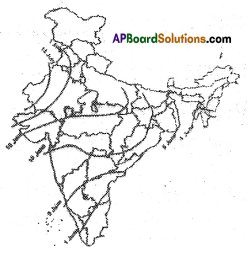
a) Identify the onset of the monsoon shown in the map below.
b) When does this monsoon reach Madhya Pradesh?
Answer:
a) South-West Monsoon,
b) 15th June.
Question 9.
Fill the following table. It contains factors that influence climate and weather. Use words like higher/lower, closer/farther.
| Factors | Impact on weather Higher/Lower | Closer/Farther |
| a) Latitude | Closer to equator and has more rainfall | |
| b) Relief | Even though place Y is closer to the equator because of its higher altitude it experiences low temperatures. |
Answer:
| Factors | Impact on weather Higher/Lower | Closer/Farther |
| 1. Latitude | Higher latitudes cause temperature’s decrease. Lower latitudes cause increase in temperatures. | Closer to the equator and has more rainfall. |
| 2. Relief | Even though place V is closer to the equator because of its higher altitude it experiences lower temperatures, | Closer to the equator does not affect much If the elevation of relief is more, |
Question 10.
Study the following map and answer the questions that follow.
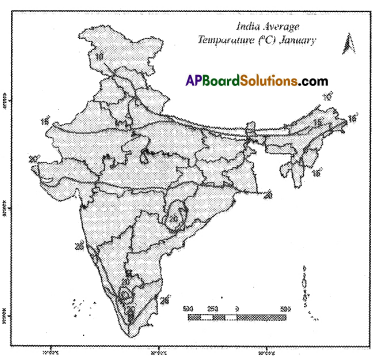
a) Which states experience high average temperature in January?
Answer:
Kerala and Tamil Nadu experience high average temperature in January.
b) What is the average temperature experienced by the North-eastern states in January?
Answer:
The North-eastern states experience 15°C average temperature in January.
![]()
Question 11.
What is the relation between the temperature of a location and insolation?
Answer:
The temperature of the atmosphere at a particular place near the Earth’s surface depends upon the insolation (heat from sun rays) received at that location. This is more intense in the low latitudes than in the high latitudes. As we move away from the equator towards the poles, the average annual temperature decreases.
Question 12.
Read the paragraph and answer the question that follows.
“In India, the southern part lies in the tropical belt closer to the equator. There-fore this region has higher average temperature than the northern part, this is one reason for the climate of Kanyakumari being entirely different from Bhopal or Delhi, India is situated roughly between 8° and 37PN latitudes and the country is divided into almost two equal parts by the Tropic of Cancer. The part south of the Tropic of Cancer lies in the tropical tone. The part north of the Tropic of Cancer lies in the temperate zone.”
Why is the climate of Kanyakumari being entirely different from Bhopal or Delhi?
Answer:
In India the southern part lies in the tropical belt closer to the equator. Therefore this region has a higher average temperature than the northern part. This is one reason for the climate of Kanyakumari being entirely different from Bhopal or Delhi.
Question 13.
Explain the latitudinal extent of India.
Answer:
India is situated roughly between 8° and 37° N latitudes and the country is divided into almost two equal parts by the Tropic of Cancer. The part south of the Tropic of Cancer lies in the tropical zone. The part north of the Tropic of Cancer lies in the temperate zone.
Question 14.
What are called western disturbances and what do they cause?
Answer:
Cyclone depressions coming from Mediterranean Sea called Western Disturbances and cause low to moderate rainfall over northern India. This rainfall is boon to the wheat crop which is generally cultivated in ‘Rabi’ season.
![]()
Question 15.
What is the effect of north-east trades on India?
Answer:
India lies in the trade wind belt of Northern Hemisphere – north-east trades blow over India from land to sea and are therefore dry. However, some amount of rainfall occurs on the Coromandel coast of Tamil Nadu from these winds, as they pick up moisture from the Bay of Bengal while crossing it.
Question 16.
Write about ‘mango showers’ in Andhra Pradesh?
Answer:
Towards the end of the summer season, pre-monsoon showers (‘bursting monsoon’) are common in the Deccan Plateau. These help in the early ripening of mangoes and other plantation crops in peninsular India. Hence they are locally known as mango showers in Andhra Pradesh.
Question 17.
What is known as “Onset of monsoon”?
Answer:
The Arabian Sea branch arrives at the west coast of India and moves northward. Both the Arabian Sea and Bay of Bengal branches reach India by the beginning of June, which is known as ’Onset of monsoon1.
Question 18.
What is known as “October heat”?
Answer:
October-November is a period of transition from a hot wet condition to dry winter condition. The retreat of the monsoons is marked by clear skies and rise in temperature. The land is still moist. Owing to the con¬ditions of high temperature and humidity, the weather becomes rather oppressive. This is commonly known as October heat.
![]()
Question 19.
Write about the Indian traditional seasons.
Answer:
In the Indian tradition, a year is divided into six two-monthly seasons. This cycle of seasons that the people in north and central India follow is based on their practical experience and age-old perception of weather phenomena. There is a slight variation in the timing of the seasons between northern and southern India.
The seasons are
- Vasantha
- Grishma
- Varsha
- Sharad
- Hemantha
- Shishira.
Question 20.
What is called Greenhouse effect?
Answer:
Keeping us warm is one of the most impor¬tant things that the atmosphere does for us.
It is like a light, but effective, blanket envelo¬ping Earth. The atmosphere traps a lot of the solar energy that reaches. Earth by preventing it from totally escaping back into space. This is called the Greenhouse effect.
Question 21.
What is called AGW?
Answer:
Earlier cycles of cooling and warming happened over very long periods of time. This allowed much of the life on Earth the time to adapt to the changes. The problem now is that the heating is much more rapid and could lead to catastrophic changes. Much of the warming that has been occurring since the Industrial Revolution is because of human activities. Hence, the current global warming trend is called AGW (Anthropo-genic Global Warming anthropogenic means caused by humans).
Question 22.
What does climate refer to?
Answer:
Climate refers to such conditions over a large area and follows a similar general pattern over many years. What has been the general conditions, year after year, over thirty years or more, gives us the climate.
Question 23.
Explain the word ‘monsoon’.
Answer:
The climate of India is strongly influenced by the monsoon winds. The sailors who came to India during olden days noticed the regular periodic reversal of winds. They used these winds to sail towards the Indian coast. Arab traders named this seasonal reversal of wind system ‘monsoon’.
![]()
Question 24.
Read the following paragraph and comment on ‘bursting monsoon’.
“Towards the end of the summer season, pre-monsoon showers (‘bursting monsoon’) are common in the Deccan Plateau. These help in the early ripening of mangoes and other plantation crops in peninsular India. Hence they are locally known as mango showers in Andhra Pradesh.”
Answer:
It is the sudden onset of rainfall in the first week of June. Around the time of arrival of monsoon, the normal rainfall increases suddenly and continues constantly for several days. This is known as burst of monsoon.
10th Class Social 4th Lesson Climate of India 4 Marks Important Questions and Answers
Question 1.
“Indian agriculture depends completely on the monsoon.” Describe the cycle of the monsoon patterns.
Answer:
The climate of India is strongly influenced by the monsoon winds. The sailors who came to India during the olden days noticed the regular periodic reversal of winds. They used these winds to sail towards the Indian coast. Arab traders named this seasonal reversal of wind system ‘monsoon’.
- The monsoon forms in the tropical area at approximately between 20°N and 20°S latitudes.
- The heating of land creates low pressure on the landmass of Indian subcontinent.
- Southwest monsoon ‘on set’ reaches Kerala and gives rain to Western ghats and Northeast India except in the Coromandel coast.
- It is operated in two branches, Arabian sea branch and Bay of Bengal branch.
- Retreat of the monsoon is marked by clear skies and rise in temperature.
- Lower pressure conditions move to Bay of Bengal by early November.
- Bulk of the rainfall of the Coromandel coast is derived from depressions and cyclones.
Question 2.
Observe the following Climographs and answer.
 a) Why is there a difference between the rainy season of Chennai and Jaipur?
a) Why is there a difference between the rainy season of Chennai and Jaipur?
Answer:
Jaipur receives rainfall by the South-West monsoons.
Chennai receives rainfall by the North-East monsoons.
b) In which month is the highest temperature recorded in Jaipur?
Answer:
May.
c) Among these two, which area gets the highest rainfall?
Answer:
Chennai.
d) Both the areas are rain shadow regions. Is it? How would you justify it?
Answer:
Yes. In the South-West monsoon season Jaipur and Chennai areas are rain shadow regions.
(OR)
No. Only in the South-West monsoon season Chennai is rain shadow region. But not in North-East monsoon.
![]()
Question 3.
Read the given para and answer the question given below.
Most scientists from around the world agree on this much: AGW is real, it is happening, and it is leading to rapid and drastic climate change. They warn that severe weather and other changes will increase in the coming years. One of the human activities that contribute to global warming is deforestation.
Read the text given above and comment on the climate change.
Answer:
- The drastic changes in climate influence the life on Earth.
- The raise in average temperature leads to the raise in sea levels.
- The habitations in coastal areas will be drowned.
- People may lose their livelihood.
- Unexpected changes may occur in rainfall.
- Droughts and floods may occur.
- Agriculture will be influenced.
- Climate change happens at a global level and therefore, it affects all of us.
Question 4.
Developed countries want developing countries to cut down on burning coal and other activities that add greenhouse gases to the atmosphere. Is this justified? Explain your opinion.
Answer:
This is justified because activities that increase greenhouse gases are increased. The net effect is that these gases lead to the depletion of the ozone layer in the upper atmosphere.
When the ozone layer is depleted what happens is that radiation pertaining to ultraviolet rays reaches the earth’s surface and this radiation may cause cancer.
OR
It is not justified because
- Developing countries argue that the developed countries have developed by burning fossil fuels.
- They also argue that they cannot develop without burning fossil fuels.
- They also want the developed countries to show alternative sources for their development.
Question 5.
Analyze the relationship between the population density and geographical conditions of a particular area.
Answer:
- India is one of the most densely populated countries of the world.
- The population density of India in the year 2011 was 382 persons per sq. km.
- Densities vary from 1102 persons per sq. km. in Bihar to only 17 persons per sq. km. in Arunachal Pradesh.
- Assom and most of the peninsular states have moderate population densities.
- Hilly, dissected and rocky nature of the terrain, moderate to low rainfall, shallow and less fertile soils have influenced population densities in these areas.
- The Northern plains and Kerala in the south have high to very high population densities because of the flat plains with fertile soils and abundant rainfall.
![]()
Question 6.
Read the following paragraph and write your comments.
Most scientists from around the world agree on this much: AGW (Anthropogenic Global Warming; anthropogenic means caused by humans) is real, it is happening, and it is leading to rapid and drastic climate change. They warn that severe weather and other changes will increase in the coming years and threaten life as we know it.
Answer:
Global warming: It refers to an unequivocal and continuing rise in the average temperature of Earth’s climate system.
Human activities contributing to global warming:
- Human activities contribute to climate change by causing changes in Earth’s atmosphere in the amount of greenhouse gases, aerosols and cloudliness.
- The largest known contribution comes from the burning of fossil fuels, which releases carbon dioxide gas to the atmosphere.
- Greenhouse gases and aerosols effect climate by altering incoming solar radiation and out going infrared radiation that are part of Earth’s energy balance.
- Due to industrial revolution, industrial pollution increases day by day.
- Increasing of over population and using of power driven vehicles.
- New methods of agricultural practices.
- Mining, the establishment of nuclear power plants and reckless deforestation, etc.
Evil effects of global warming:
- The earlier changes of cooling and warming are more rapid and leading to catastrophic changes.
- If the climate is raised by 2° C, it leads to one meter raise in the sea levels.
- The faster melting of Himalayan glaciers would disturb the livelihood of fisher folk.
Measures to minimize the influence of the global warming:
- Afforestation
- Reduction of burning of fossil fuels.
- Instead of coal use of solar energy to be encouraged.
- Reduction in the use of vehicles and encouragement of public transport system.
- Release of greenhouse gases into the atmosphere should be reduced.
Question 7.
Name the factors influencing climate. Explain any two of them.
Answer:
The factors that affect climate are called climatic controls. These include:
- Latitude
- Land-water relationship
- Relief
- Upper air circulation
1. Latitude:
- Intensity of temperature depends on the latitude. It is more intense in lower latitudes than at higher latitudes.
- In India, the southern part lies in the tropical zone, closer to the equator; it has a higher average temperature than that in the northern part.
Ex: The climate of Kanyakumari is different from that of Delhi.
2. Land-water relationship:
- The water bodies absorb and lose heat more slowly than land.
- Due to this the formation of land and sea breezes influence the climate of coastal region. Ex: As Visakhapatnam is on the seashore, it is cooler than Guntur which is not on the seashore.
![]()
Question 8.
Observe the following graph and analyze it.
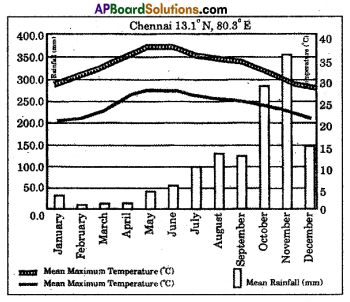 Answer:
Answer:
- This climograph shows the details of Mean Maximum Temperature, Mean Minimum Temperature and Mean Rainfall of Chennai.
- Chennai receives 38°C to 28°C maximum temperature during the year.
- It receives 20°C to 28°C minimum temperature during the year.
- The wettest months for Chennai are October and November.
- It is because it receives rainfall during the retreat of the southwest monsoon or during the north-east monsoon.
- The driest month for Chennai is February / March and the rainfall for the month is 15 mm.
- The hottest months for Chennai are May and June.
- Chennai has a moderate climate with 38°C as the highest and 20°C as the lowest temperature.
- The weather in Chennai is mostly hot and humid.
- The close proximity of ocean and equator makes the climate and weather in Chennai relatively
consistent with less variation in the seasonal temperature.
Question 9.
Classify the monsoon winds in India and explain them.
Answer:
Monsoon winds
Climate of country is determined by various factors like Latitude, Relief, Land water relationship and upper air circulation. Climate in India is influenced by monsoons. The Arab traders named the term monsoon. The monsoons in the tropical area are strong as low pressure forms here. The Southeast monsoon winds from the Southern hemisphere carry moisture as they flow over the Indian ocean and towards the equatorial low-pressure zones.
After crossing the equator, these winds deflect towards the low pressure formed in the Indian sub-continent. The heating of land creates low pressure on the land mass of Indian sub-conti¬nent, especially over central India and the Gangetic plain. Along with this, the Tibetan plateau gets intensely heated and causes strong vertical air currents and the formation of low pressure over the plateau at above 9 kms altitude.
They then flow as the southwest monsoon. The Indian peninsula divides them into two branches – the Arabian Sea branch and the Bay of Bengal branch. The Bay of Bengal branch strikes the Bengal coast and the southern face of the Shillong plateau. Then, it gets deflected and flows westward along the Gangetic valley. The Arabian Sea branch arrives at the west coast of India and moves north ward. Both the branches reach India by the beginning of June, which is known as the ‘onset of monsoon’. They gradually spread over the entire country in four to five weeks. The bulk of annual rainfall in India is received from south-west monsoon. The amount of rainfall is very high along the west coast due to the Western ghats, and in north-east India due to the high peaked hills. Tamil Nadu coast (Coromandel), however, remains mostly dry during this season as it is in the rain shadow area of the Arabian Sea branch and is parallel to the Bay of Bengal branch.
The low pressure conditions which once prevailed over north-western India move far South to the centre of the Bay of Bengal by early November. During this period,cyclonic depressions are common which originate over the Andaman area. These tropical cyclones are often very destruc¬tive. The thickly populated deltas of the Godavari, Krishna and Cauveri are their targets. No year ever goes disaster-free. Occasionally, these tropical cyclones visit Sundarbans and Bangladesh too. Bulk of the rainfall of the Coramandel Coast is derived from depressions and cyclones.
![]()
Question 10.
“Human activities are the main cause for global warming” comment.
Answer:
Global warming: It refers to an unequivocal and continuing rise in the average temperature of Earth’s climate system.
Human activities contributing to global warming:
- Human activities contribute to climate change by causing changes in Earth’s atmosphere in the amount of greenhouse gases, aerosols and cloudliness.
- The largest known contribution comes from the burning of fossil fuels, which releases carbon dioxide gas to the atmosphere.
- Greenhouse gases and aerosols effect climate by altering incoming solar radiation and out going infrared radiation that are part of Earth’s energy balance.
- Due to industrial revolution, industrial pollution increases day by day.
- Increasing of over population and using of power driven vehicles.
- New methods of agricultural practices.
- Mining, the establishment of nuclear power plants and reckless deforestation, etc.
Evil effects of global warming :
- The earlier changes of cooling and warming are more rapid and leading to catastrophic changes.
- If the climate is raised by 2° C, it leads to one meter raise in the sea levels.
- The faster melting of Himalayan glaciers would disturb the livelihood of fisherfolk.
Question 11.
Observe the graph and answer the question below
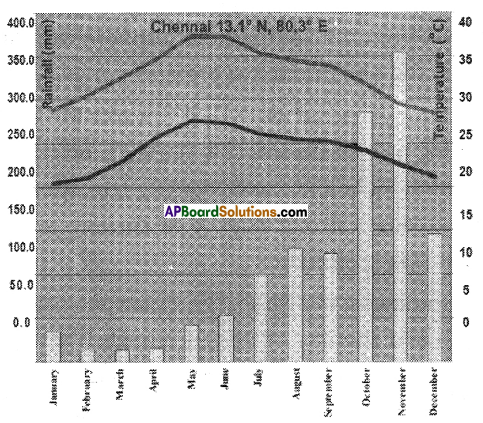 a) In which longitude does Chennai lie?
a) In which longitude does Chennai lie?
b) What are the elements of climate shown in this graph?
c) What are the warmest months in Chennai?
d) Give a reason for Chennai experiencing the highest rainfall in the months of October and November.
Answer:
a) 80.3° East.
b) Temperature and rainfall.
c) May and June.
d) During South – West Monsoon Chennai is the Rainshadow region. But during the time of North-East monsoon due to depression in Bengal, Chennai also have low pressure, that’s why Chennai receives high rainfall in the months October – November.
![]()
Question 12.
Read the following paragraph and write your opinion on human activities with regard to the industrial revolution.
Earlier, cycles of cooling and warming happened over very long periods of time. This allowed much of the life on Earth the time to adapt to the changes. The problem now is that the heating is much more rapid and could lead to catastrophic changes. Much of the warming that has been occurring since the Industrial Revolution is because of human activities.
Answer:
- The issue discussed in this paragraph is that the industrial revolution causes for many changes related to the atmosphere. Warming is increased over the period.
- Human activities are the reasons for these changes.
- Heating is gradually increasing because of human activities like using of vehicles, plastic, refrigerators, cell phones and releasing of industrial effluents.
- Deforestation is also one of the major reasons.
- The trees are helpful in maintaining the weather cool.
- More and more green house gases are released due to industrialization.
- Development and modernization should not become the hurdle to the human life.
- The pollution and damage to the nature affect human life.
- So human beings should think of their activities keeping the future in mind.
Question 13.
Read the following paragraph and write your comments on the effect of deforestation.
Most scientists from around the world agree on this much: AGW is real, it is happening, and it is leading to rapid and drastic climate change. They warn that severe weather and other changes will increase in the coming years and threaten life as we know it. One of the human activities that contribute to global warming is deforestation.
Answer:
- According to the paragraph the Anthropogenic Global Warming is increasing and it is affecting the climate change.
- If it is not stopped there will be a threat to the next coming generation.
- The main focus is there on deforestation.
- In our country major portion of employment is from agriculture.
- For leading a better life, everyone is trying to exploit the nature.
- The farmers are cutting the trees for making agricultural implements and for the construction of houses.
- Many other people are also cutting trees for making various types of furniture.
- I suggest the government to take necessary steps to control deforestation.
- For that various awareness programmes are to be taken up.
- Necessary acts are to be implemented in a right way.
![]()
Question 14.
Read the following text and interpret it.
More recently, scientists are discovering large volumes of methane under the frozen tundras of the far northern latitudes (mainly in the vast expanses of northern Russia). As global tem¬perature increases, the ice in the tundra melts more. The methane that is trapped under the ice escapes into the atmosphere, increasing the global temperatures. In turn, this causes even more ice to melt, releasing even more methane, and so on. Methane is said to be even more powerful than carbon dioxide as a greenhouse gas.
Answer:
- Global warming has been increasing.
- As global temperature increases, the ice in the tundra melts more.
- The methane that is trapped under the ice escapes into the atmosphere, increasing the global temperature.
- Methane is even more powerful than carbon dioxide as a green house gas.
- Then it is our responsibility to reduce global warming.
- This global warming leads to climatic changes.
- Hence human activities that lead to global warming are to be reduced.
Question 15.
Look at the picture and answer the following questions.
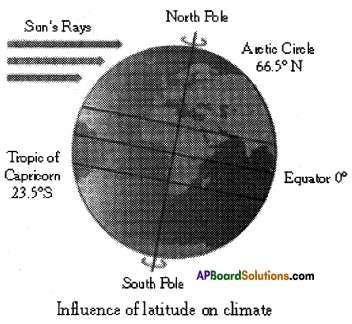
a) Which latitude is passing through the centre of India?
Answer:
The Tropic of Cancer is passing through the centre of India.
b) Which part of India lies in the tropical zone ?
Answer:
Southern India lies in the tropical zone.
c) Which part of India lies in the temperate zone ?
Answer:
Northern India lies in the temperate zone.
d) Which part of India experiences higher average temperatures? Why?
Answer:
South India experiences higher average temperature as it is close to the equator.
e) What conclusion can you draw from the above picture?
Answer:
The temperature decreases as we move away from the equator.
![]()
Question 16.
Observe the map and answer the following questions.
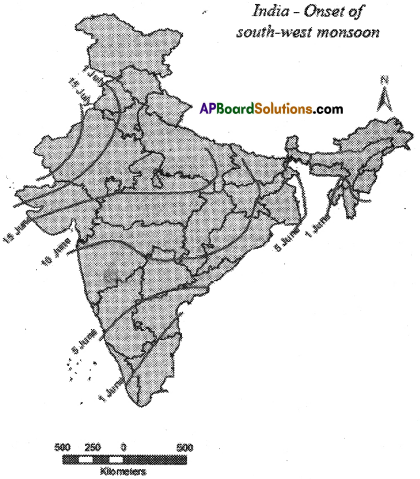 a) In which state south-west monsoons enter first in India?
a) In which state south-west monsoons enter first in India?
Answer:
In our country the south-west monsoons enter Kerala first.
b) Into which state do the south-west monsoons enter on 15 July?
Answer:
The south-west monsoons enter Rajasthan on 15 July.
c) In which state there is no effect of south-west monsoons in India?
Answer:
In our country, the south-west monsoons are ineffective in Tamil Nadu.
d) Which parts of India experience the onset of the south-west monsoon first?
Answer:
Kerala and the north-east states of India, Tripura and Mizoram.
e) Which Indian region remains mostly dry during the south-west monsoon season ?
Answer:
Coramandel coast of Tamil Nadu remains mostly dry during this season as it is in the rain shadow region of the Arabian sea branch and is parallel to the Bay of Bengal branch.
![]()
Question 17.
Study the given climograph and answer the questions that follow.
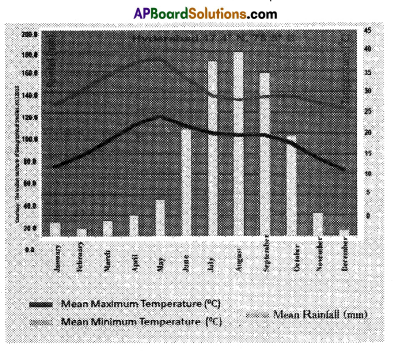 a) Where is Hyderabad located?
a) Where is Hyderabad located?
Answer:
Hyderabad is located on the 17.4° North Latitude and 78.5° East Longitude.
b) What is the mean maximum temperature recorded in Hyderabad?
Answer:
38°C.
c) In which month does it rain maximum in Hyderabad?
Answer:
In August.
d) Which is the coldest month in Hyderabad?
Answer:
December.
Question 18.
Observe the below picture and answer the following questions.
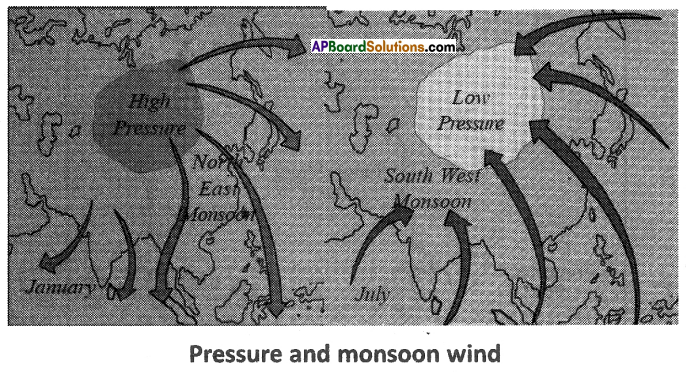 a) In which direction are the winds blowing?
a) In which direction are the winds blowing?
Answer:
Winds are blowing from high-pressure areas to low-pressure areas.
b) During which month the South-west monsoons reach Indian subcontinent?
Answer:
During July the South-west monsoons reach Indian subcontinent.
c) Which areas experience low pressure during January?
Answer:
Oceans around Indian subcontinent experience low pressure.
d) Name the monsoons that blow during the month of January.
Answer:
Retreating monsoons (or) Northeast monsoons.
e) Name the monsoons that blow during the month of July.
Answer:
South-west monsoons.
Question 19.
Locate the following in the given map of India.
- Capital of India.
Answer:
New Delhi - Capital of Arunachal Pradesh.
Answer:
Itanagar - The Dam which is on the Tungabhadra River.
Answer:
Tungabhadra - Darjeeling
- The river-based port in India.
Answer:
Kolkata - The capital of Rajasthan.
Answer:
Jaipur - The old fold mountains of India.
Answer:
Aravalis - This latitude divided the India into two equal parts.
Answer:
Tropic of Cancer - The highest peak in Western Ghats.
Answer:
Anaimudi - Jaintia Hills.
![]()
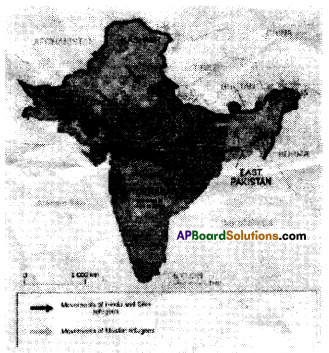 Answer:
Answer: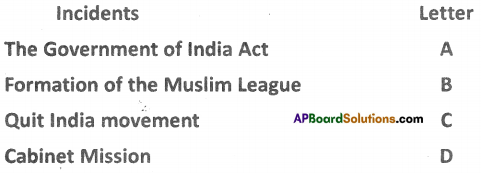 Write the suitable ENGLISH LETTER for each event listed above in the boxes against each on the timeline.
Write the suitable ENGLISH LETTER for each event listed above in the boxes against each on the timeline.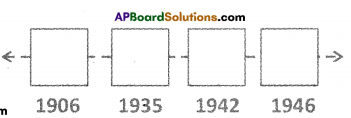

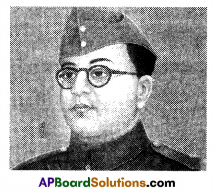
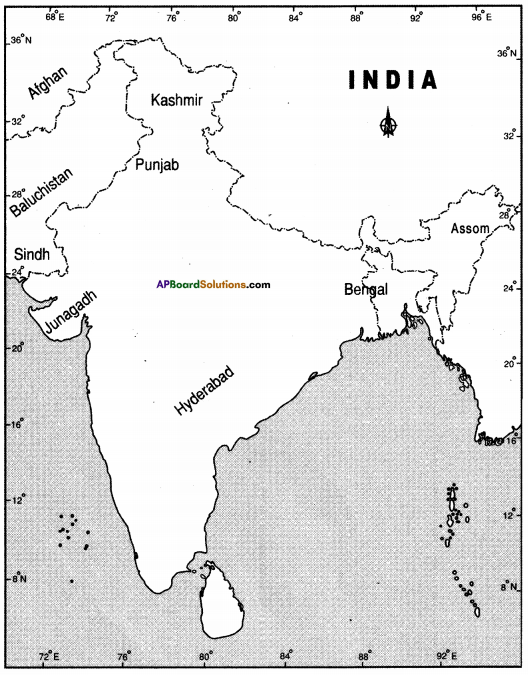
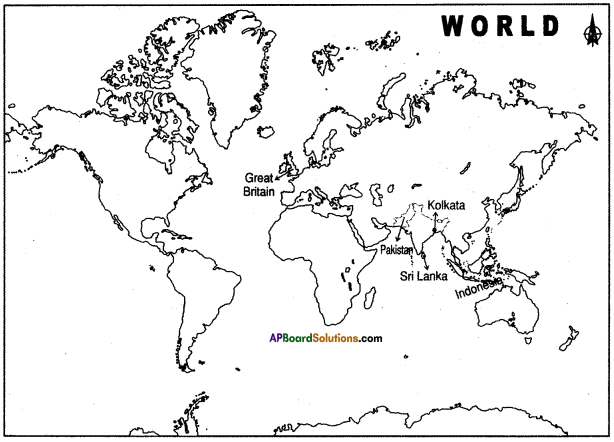
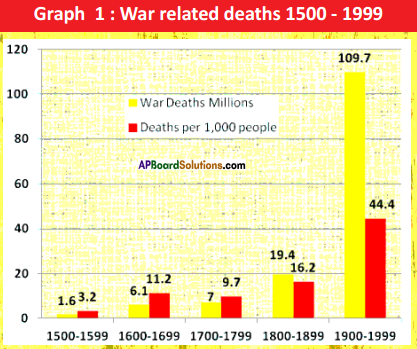
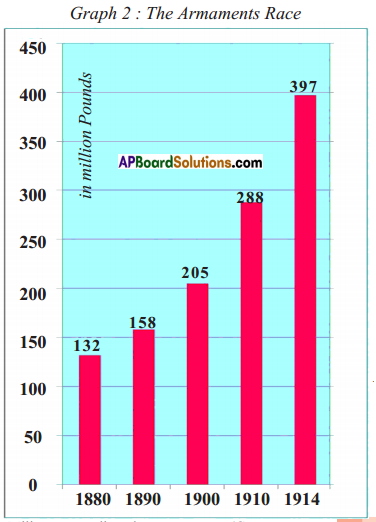
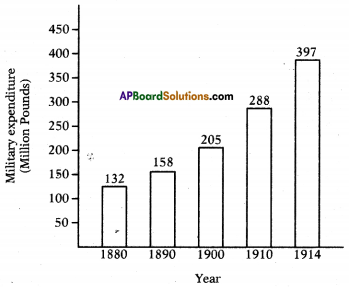
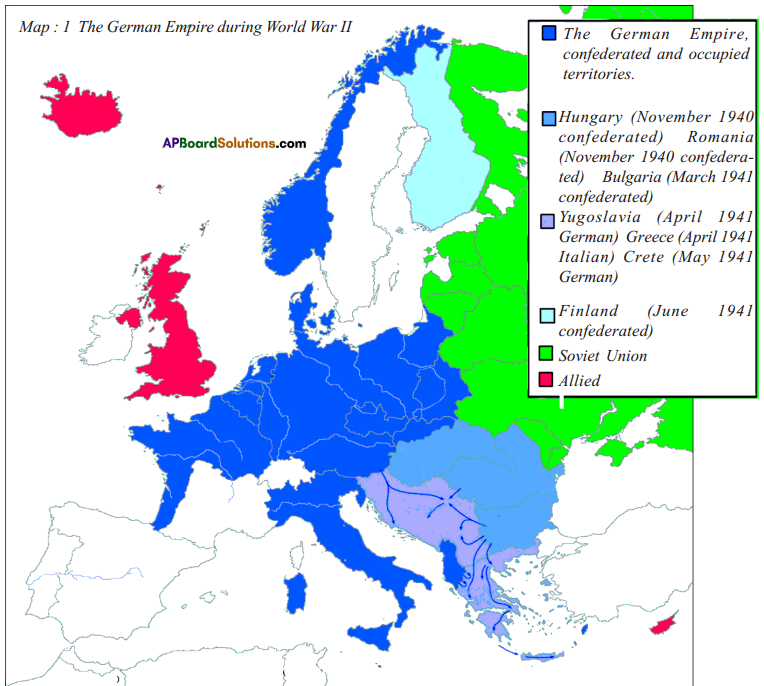 a) Name two countries that did not fall under the German Empire.
a) Name two countries that did not fall under the German Empire.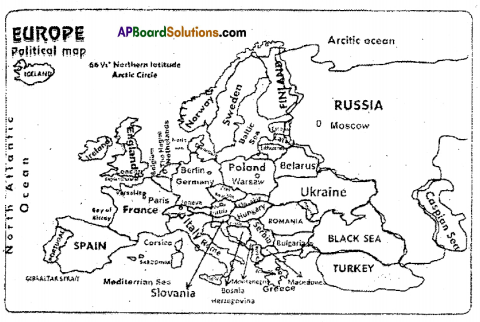 List out the Axis Power group and Central Allies group.
List out the Axis Power group and Central Allies group.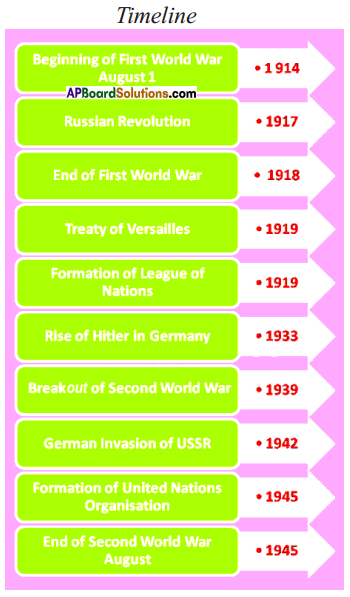 a) What was the immediate cause of World War-ll?
a) What was the immediate cause of World War-ll?
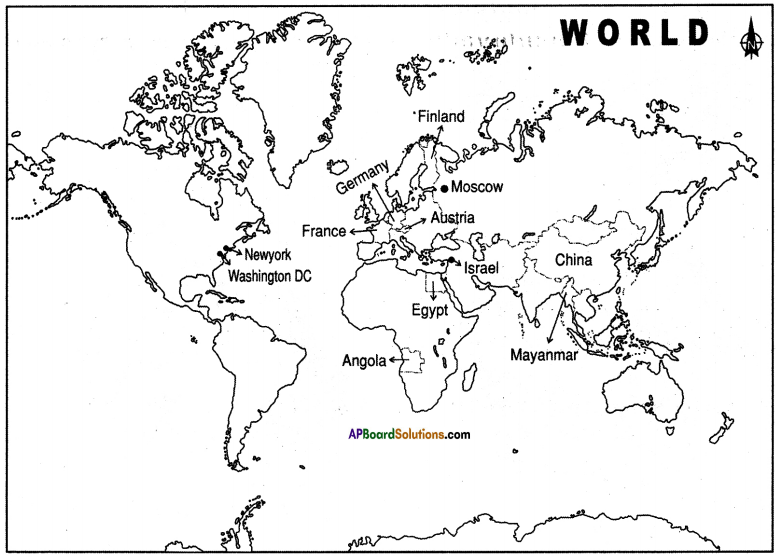
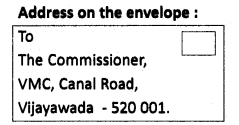
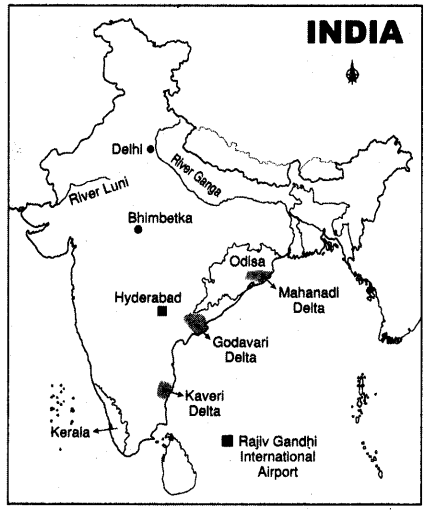

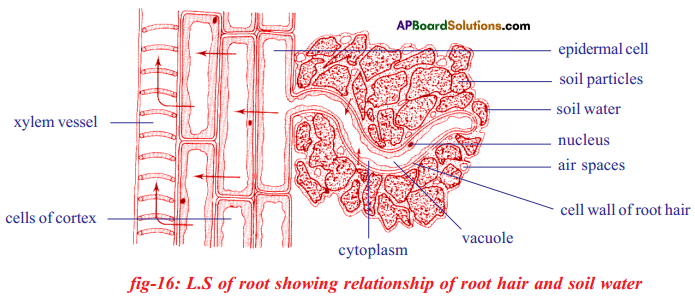
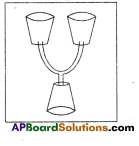

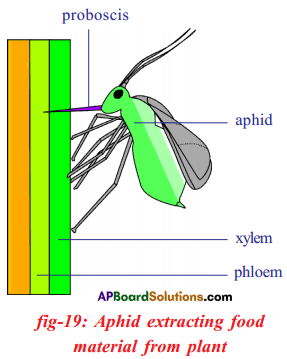
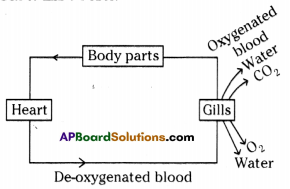
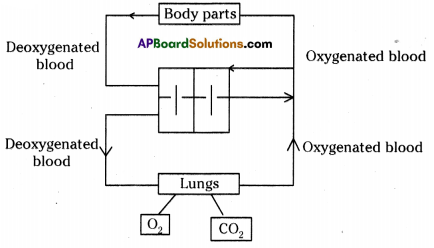
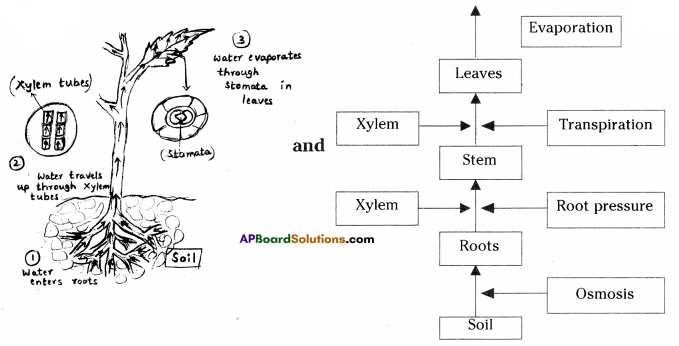
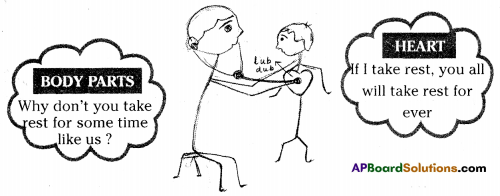
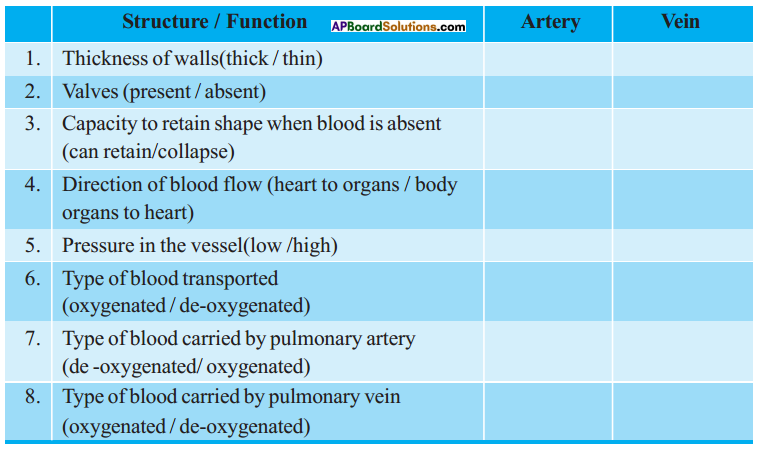 Answer:
Answer:
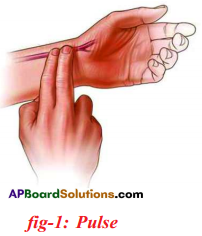 2) You feel something pushing your fingers rhythmically up and down.
2) You feel something pushing your fingers rhythmically up and down.
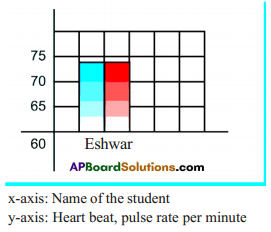

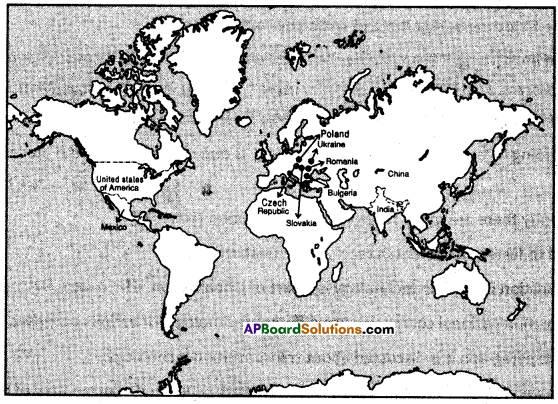
 (a) Which sector provides less employment?
(a) Which sector provides less employment?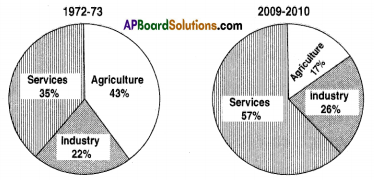
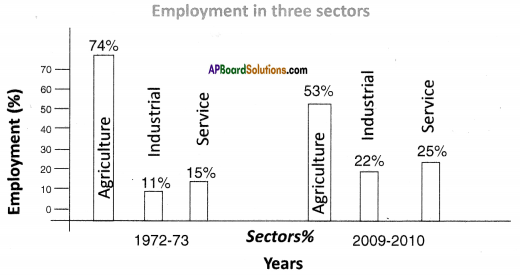
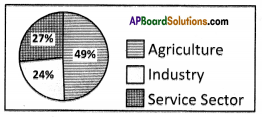
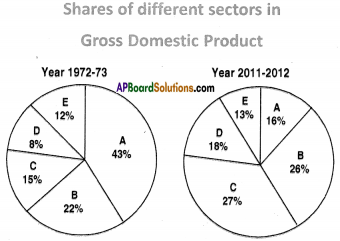
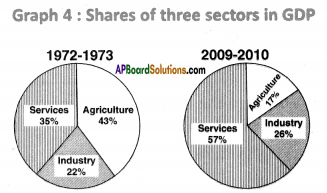
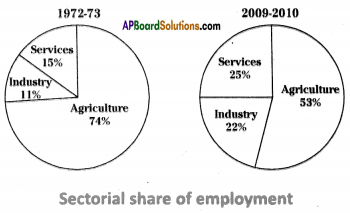
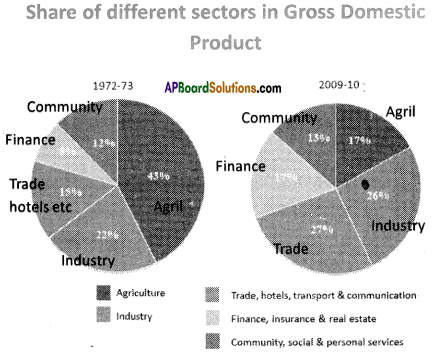
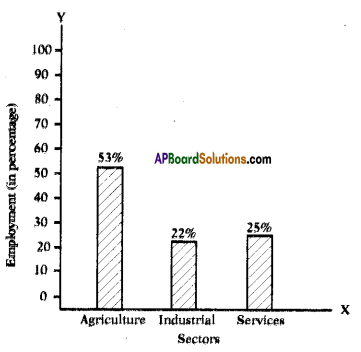
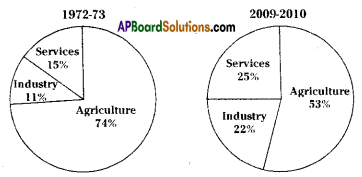
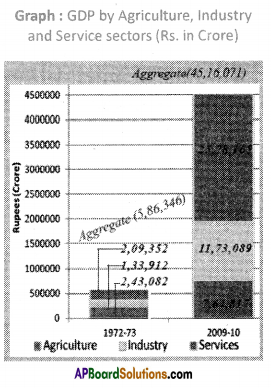
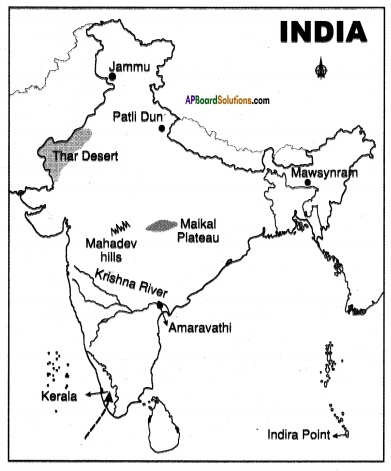
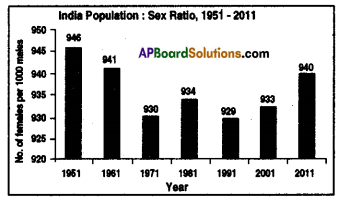
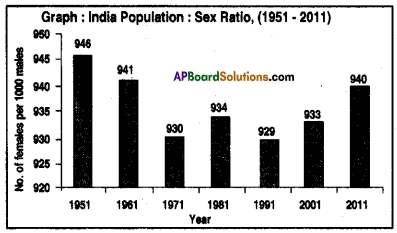 a) In which year, the highest sex-ratio was recorded?
a) In which year, the highest sex-ratio was recorded?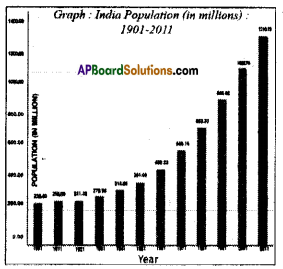 Answer:
Answer: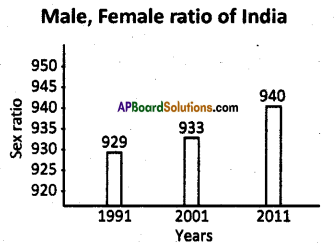 Answer:
Answer: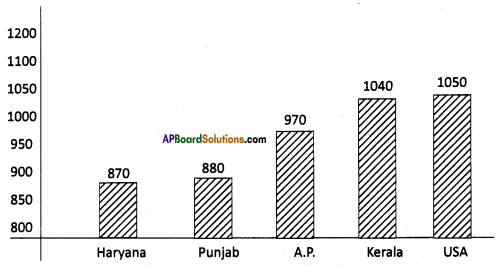

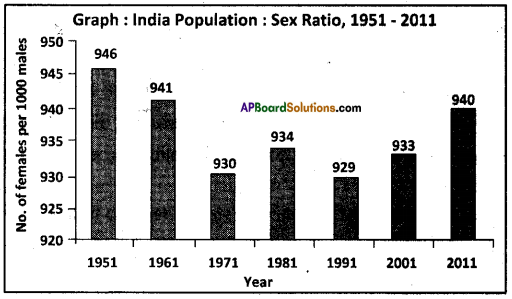
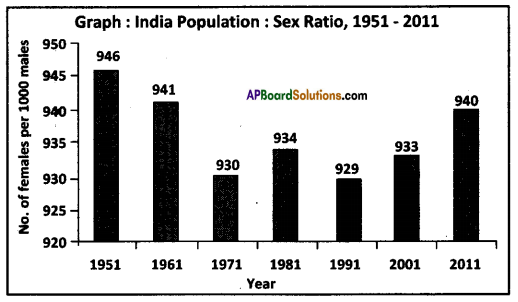
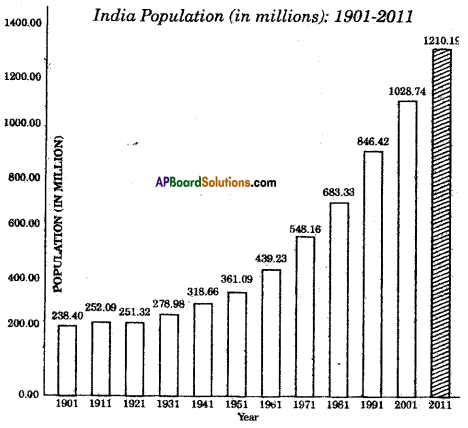
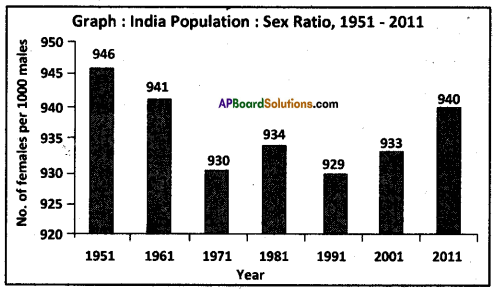 Now answer the following questions.
Now answer the following questions.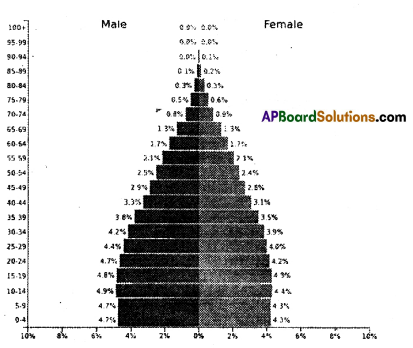 a) What are group in India has the largest percentage of people?
a) What are group in India has the largest percentage of people?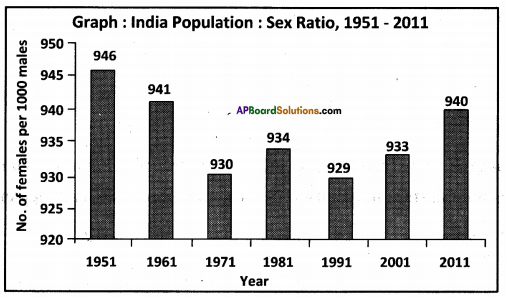 Now answer the following questions.
Now answer the following questions.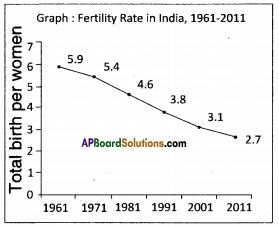 Answer:
Answer: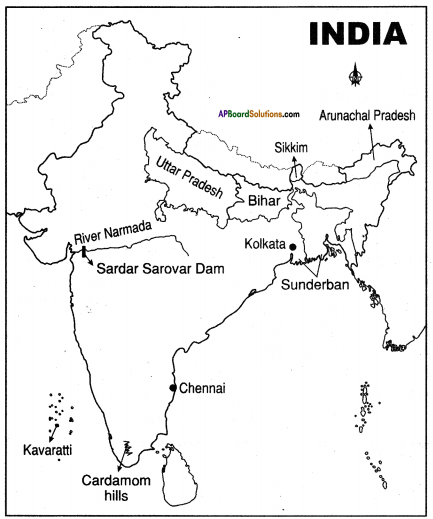
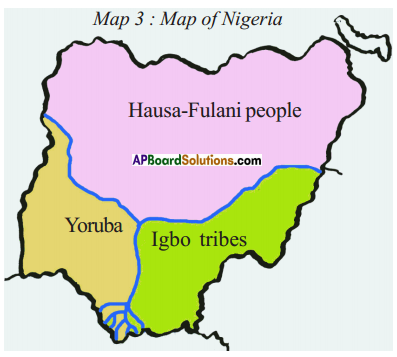 How were the British able to implement their ‘divide and rule’ policy in Nigeria?
How were the British able to implement their ‘divide and rule’ policy in Nigeria?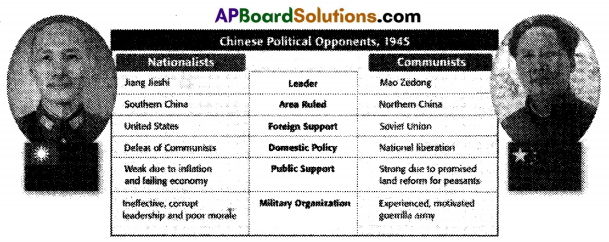 Which aspect of the Communist approach do you think led to Mao’s victory? Explain.
Which aspect of the Communist approach do you think led to Mao’s victory? Explain. a) Which nation was ruled by the Manchu Dynasty?
a) Which nation was ruled by the Manchu Dynasty?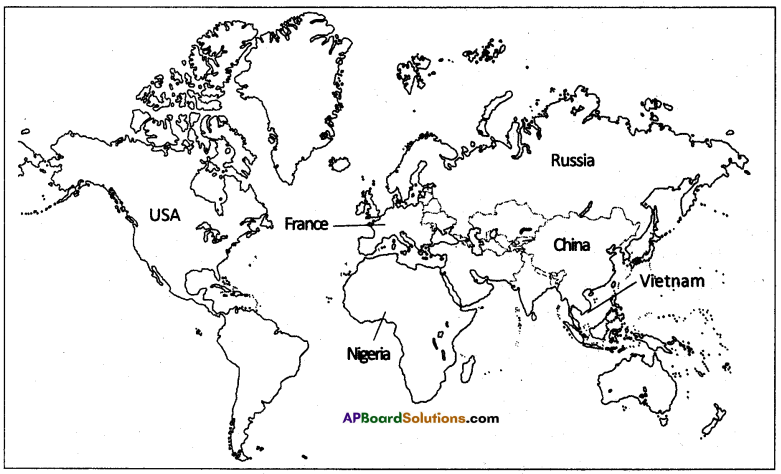
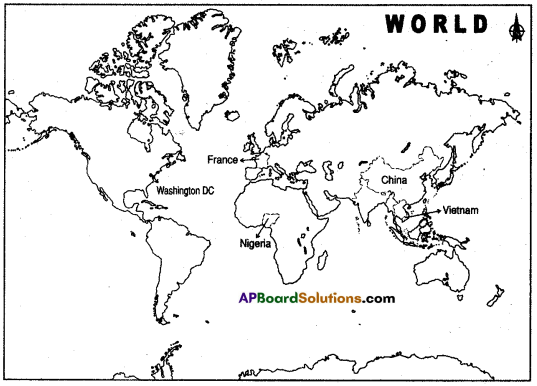





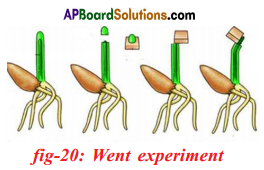
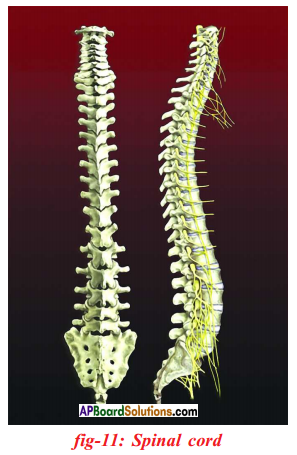
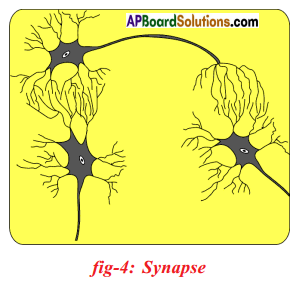
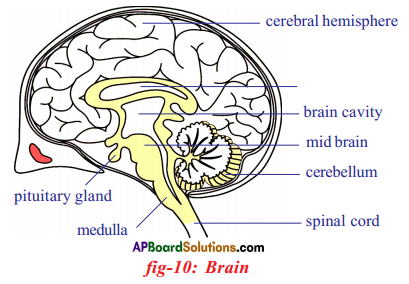
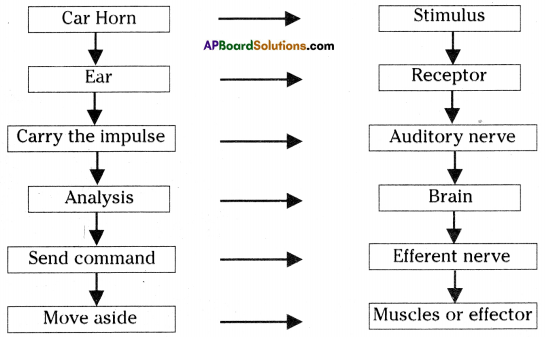
 Required materials: A chart, twine thread, fevicol, sticker.
Required materials: A chart, twine thread, fevicol, sticker.

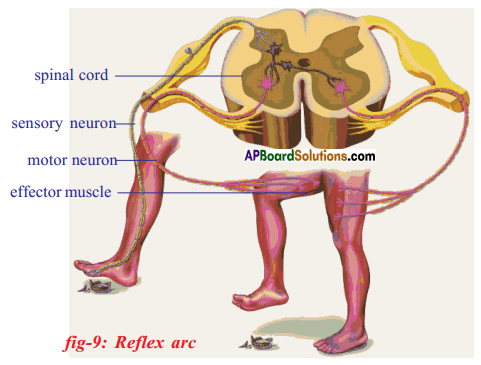
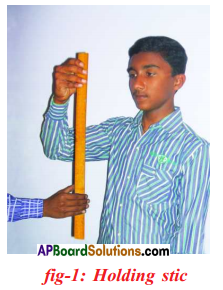
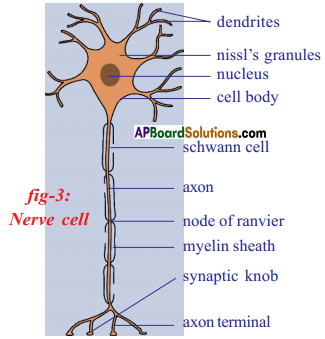 Structural unit of the nervous system is the nerve cell or neuron. Neuron is highly specialised cell. Neurons carry impulses or messages. New nerve cells are not produced to replace the damaged or destroyed nerve cell. A neuron has three parts. They are
Structural unit of the nervous system is the nerve cell or neuron. Neuron is highly specialised cell. Neurons carry impulses or messages. New nerve cells are not produced to replace the damaged or destroyed nerve cell. A neuron has three parts. They are
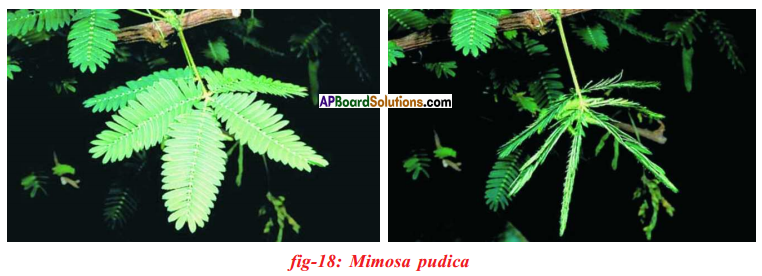

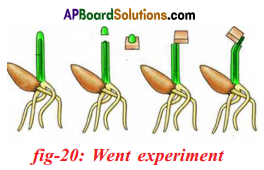 Went interpreted these experiments as showing that the coleoptile tip exerted it’s effect by means of chemical stimulus rather than a physical stimulus such as an electrical impulse.
Went interpreted these experiments as showing that the coleoptile tip exerted it’s effect by means of chemical stimulus rather than a physical stimulus such as an electrical impulse.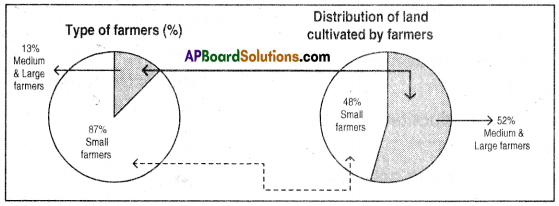

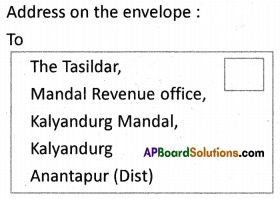

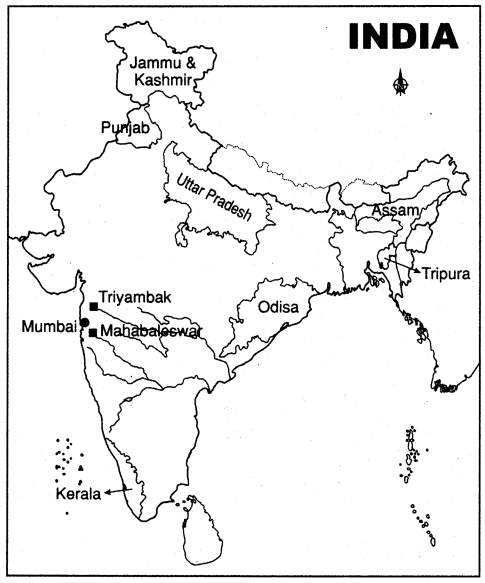
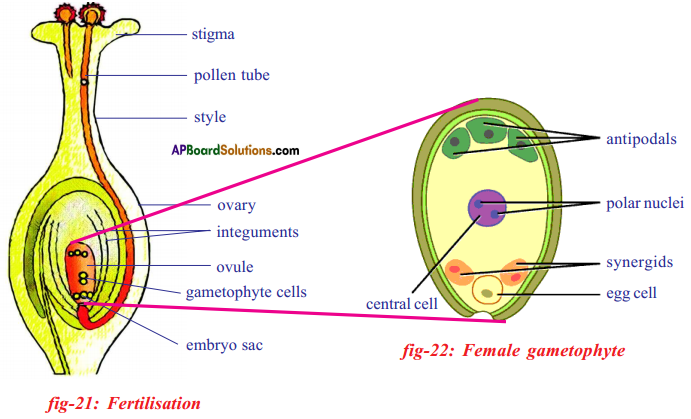

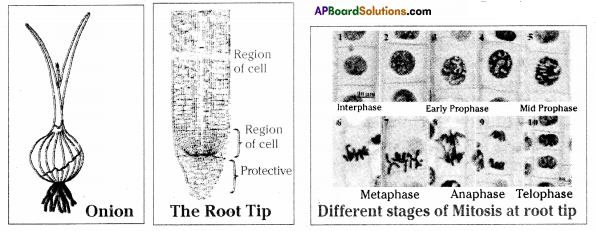
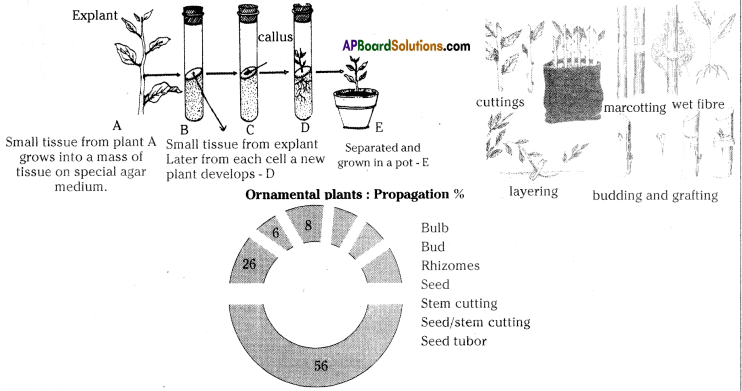
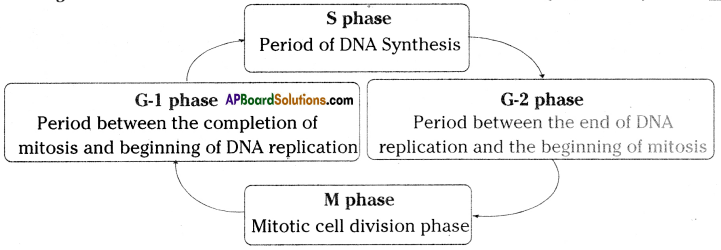
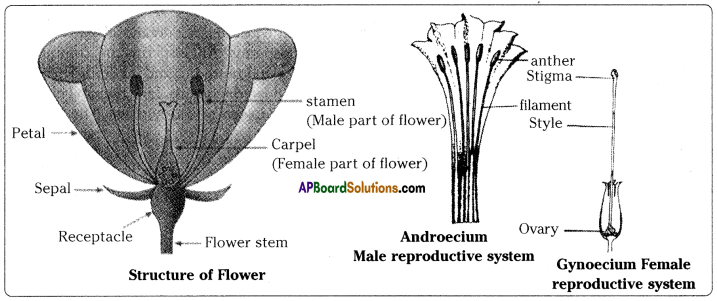
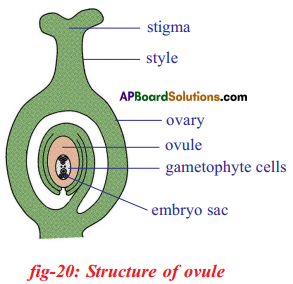
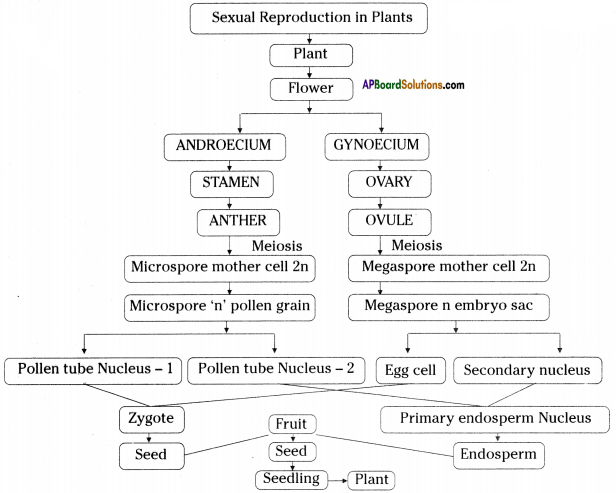
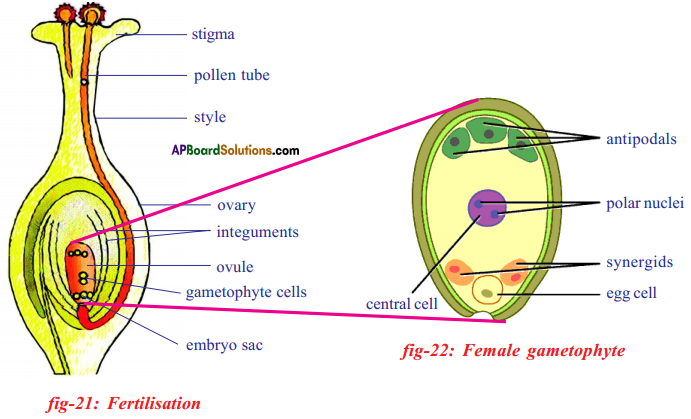
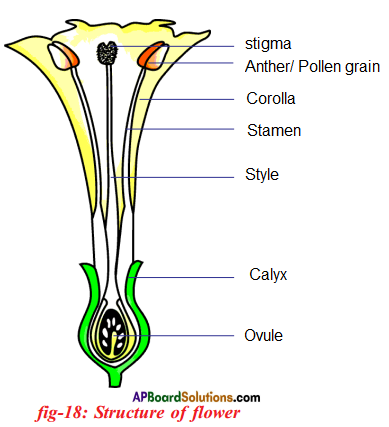 Functions of flower parts:
Functions of flower parts:
